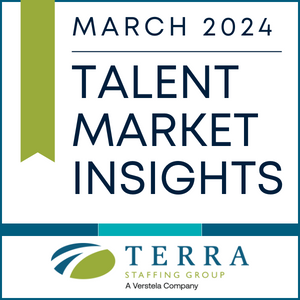Use Your HR Data Strategically: 5 Essential Tips
Posted on November 24, 2017

Here are 5 essential tips for using HR data strategically:
Update your strategic staffing plan to reflect your best talent sources.
Analyze the source of each average candidate, each outstanding candidate and each new hire – and then prioritize your 2018 spending on talent outreach appropriately. For instance, if “help wanted ads” in the local newspaper failed to turn up a single viable candidate, it’s time to move those dollars elsewhere.
Double-check your recruiting ratios.
What is your ratio of applicants to interviews scheduled? Of interviews to job offers? Calculate these, then brainstorm with your recruiting partner to find ways to improve them. If you can compare ratios over several years, even better: comparing ratios alongside their respective staffing plans can help you identify where changes have made an impact.
Survey your teams and act on their responses.
Ask your new hires what they like best about their jobs and what they’d change if they could. Ask their teams the same thing. A simple survey created in Google Surveys, SurveyMonkey or a similar tool will help you pinpoint where you can continue supporting your teams and where you need to address potential issues to boost productivity and retention in 2018.
Benchmark your pay practices.
HR data can tell you who in your organization is being compensated at what rate. Publicly available data online can tell you whether those compensation amounts are competitive with other companies. And benchmarking employee compensation against performance reviews can tell you whether you are overpaying or underpaying employees relative to their value to your organization – a key factor in retention.
Calculate your time to hire – and call your recruiter.
Calculate the time it took to fill each position you hired for in 2018. If a specific challenge or opportunity made the hiring time longer or shorter, note it. Also, calculate the average and median times to hire. Then, call your staffing partner, who can provide insight on the time you’re spending and help you streamline the process.
At TERRA Staffing, our recruiting partners help our clients collect and implement hiring data strategically to find better talent and achieve their business goals. Contact us today to learn more about our recruitment services in Phoenix, Portland and Seattle.
Categories: HR and Management Advice, Staffing Tips & Recruiting Trends
Tags: How to Use HR Data, How to Use Recruiting Data, HR data




